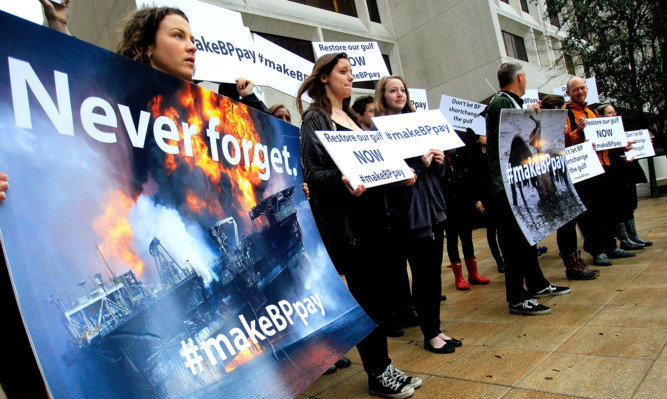Oil giant BP has warned that millions of dollars of “fictitious” compensation claims for the 2010 Gulf of Mexico oil spill are putting the company at risk.
The group has sought an injunction to stop payouts to companies which it argues are claiming fraudulent or inflated losses from its $8.2 billion (£5.4 billion) compensation pot.
Reports said an appeal document recently filed by BP in the US courts argues that businesses from the Gulf coast have been handed millions of dollars for “non-existent, artificially calculated losses”.
The blow-out of the Deepwater Horizon well off the Louisiana coast in 2010 claimed 11 lives and damaged fishing and tourism industries as well as marine and wildlife habitats, forcing BP to agree a multibillion-dollar compensation deal in April 2012.
But BP warned in the court filing that it will be “irreparably harmed” unless the compensation system is reformed. The oil giant has reportedly said the cash drain could put its dividend at risk and make it vulnerable to a takeover.
According to reports, BP said it has “been ordered to pay hundreds of millions of dollars – soon likely to be billions – for fictitious and inflated losses”.
BP is said to be planning to ask Prime Minister David Cameron to persuade the US government to intervene.
The claim reportedly adds: “If this travesty is allowed to continue, BP will be irreparably harmed and future defendants will be reluctant to settle because they cannot be confident that settlement agreements will be construed textually and fairly.”
In its first-quarter results published last month, BP warned that compensation may be “significantly higher” than the $8.2 billion estimate it has set aside, because of claims it has yet to receive and higher-than-expected payouts so far.
BP also emphasised that the compensation settlement is “uncapped except for economic loss claims related to the Gulf seafood industry”.
BP’s complaint centres on the way businesses are allowed to compare earnings before and after the spill in favourable ways which appear to inflate losses.
Its complaint reportedly cites a $9.7 million (£6.4 million) payout to a construction company based 200 miles off the coast of Alabama, even though 2010 was its best year on record.
BP has already disposed of $38 billion US (£25 billion) of assets to cover the known costs of the disaster.
BP and fellow oil giant Shell also face a European Commission investigation into price-rigging claims, after EC investigators raided several companies in the sector.
